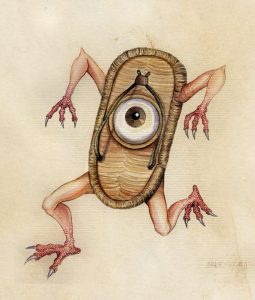I never knew that giant snails featured so prominently in medieval paintings, but now that I do, this is the first question on my mind. They do, it turns out. According to Sarah J. Biggs of the British Library, “images of armed knights fighting snails are common” in 13th and 14th century illuminated manuscripts, “especially in marginalia.” Check out a sampling below:
View post on imgur.com
One theory about the snails, Biggs goes on, is that they represent the Resurrection; others suggest they are a symbol of the Lombards, a group “vilified in the early middle ages for treasonous behaviour”; still others have described the ‘knight v snail’ motif as “a representation of the struggles of the poor against an oppressive aristocracy, a straightforward statement of the snail’s troublesome reputation as a garden pest, a commentary on social climbers, or even as a saucy symbol of female sexuality.”
As /r/AskHistorians puts it, in other words, there are “as many explanations as there are scholars”; fundamentally, we just really don’t know. Redditor /u/TheAlaskan relates another plausible account:
“I’m partial to the explanation of Medievalist Lisa Spangenberg, who suggests that the snail is ‘a reminder of the inevitability of death.’
To understand that reference, you have to refer to Psalm 58 (Wycliffe translation) . We’re looking here at verses 7-8:
7 They shall come to nought, as water running away; he bent his bow, till they be made sick. (They shall come to nothing, like water running forth; and when they go to bend their bows, they shall be made feeble, or weak.)
8 As wax that floateth away, they shall be taken away; fire fell above, and they saw not the sun. (Like a snail that melteth away into slime, they shall be taken away; like a dead-born child, they shall not see the sun.)
Like the snail, even the best-armored knight will melt away.”
Fascinating and bizarre stuff.



